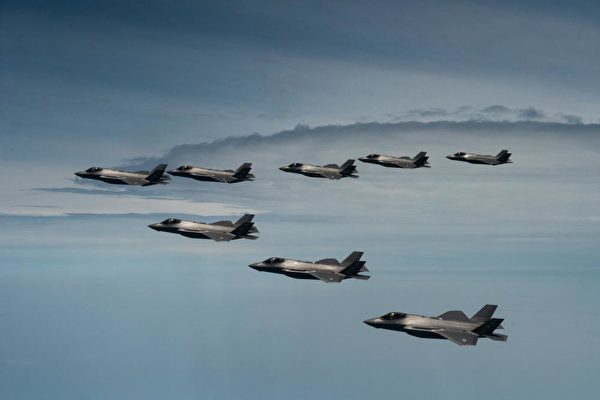In a recent milestone for the United States’ pinnacle of fighter jet engineering and technology, the F-35 Lightning II stealth fighter aircraft, the 1000th F-35 combat aircraft was completed in February and is soon to be delivered to customers. While the F-35 is in high demand globally, weaknesses in the Chinese military aircraft have been exposed in the modern fighter jet market.
The F-35 Lightning II was designed and manufactured through a collaboration between Lockheed Martin, BAE Systems, and Northrop Grumman, and it entered into service in 2016. As one of the top contenders among fifth-generation fighter jets, the F-35 holds a dominant position and is favored by armed forces worldwide.
As a fifth-generation fighter jet, the F-35 Lightning II boasts features such as stealth capabilities, high maneuverability, and super cruise not present in previous generations of aircraft, with an incredible multifunctional weapons payload capacity of up to 18,000 pounds.
Due to shifts in global dynamics, the production volume of the F-35 is expected to continue to rise with more countries gearing up to equip themselves with the aircraft. Japan stands as the largest user of the F-35, with a significant presence in Europe as well, as many countries prepare to transition to the F-35. The U.S. military plans to have a total of 2,456 F-35s in service by 2044, surpassing Lockheed Martin’s initial sales projection of over 5,000 units.
On the other hand, despite China’s efforts to increase the production of jets like the J-20, in comparison to major competitors, Chinese military aircraft are smaller in scale and less advanced in terms of modernization.
While the J-20 from China may come at a lower price, its usage is presently restricted to the Chinese Air Force, lacking a proven track record. Potential buyers have become cautious as they prefer fighter jets that come from countries with a long history of successful military aircraft development and deployment.
Despite China’s substantial investment in aircraft industries, demand for these modern Chinese fighter jets is currently low. The inadequacy of demand for Chinese military jets can be attributed to three main factors: quality, price, and political influence.
Developing and producing reliable, high-performance jet engines for fighter aircraft is an extremely complex and challenging task, requiring advanced technology, specialized knowledge, and years of research and development. Unfortunately, Chinese-produced engines are pricier compared to those from Russia. Buyers with longstanding ties to Russia are more likely to choose the cheaper and more reliable Russian engines over the more expensive and unverified Chinese engines.
Political influence plays a vital role in fighter jet sales. The international fighter jet market is not just about quality and cost but also about decades-long partnerships and political connections. China has faced challenges on this stage, especially with its actions in the South China Sea leading to strained relations with potential buyers like the Philippines and India.
China’s foreign policy and arms sales strategy are crucial factors in countries opting out of purchasing Chinese fighter jets. Particularly under opposition from NATO allies, especially the United States, Turkey canceled a $4 billion agreement with China for a high-end missile defense system.
According to the F-35 Joint Program Office, as of the beginning of this year, the Lightning II has accumulated over 773,000 flight hours and over 469,000 sorties, with over 70 countries currently using or soon to use this stealth fighter jet.

